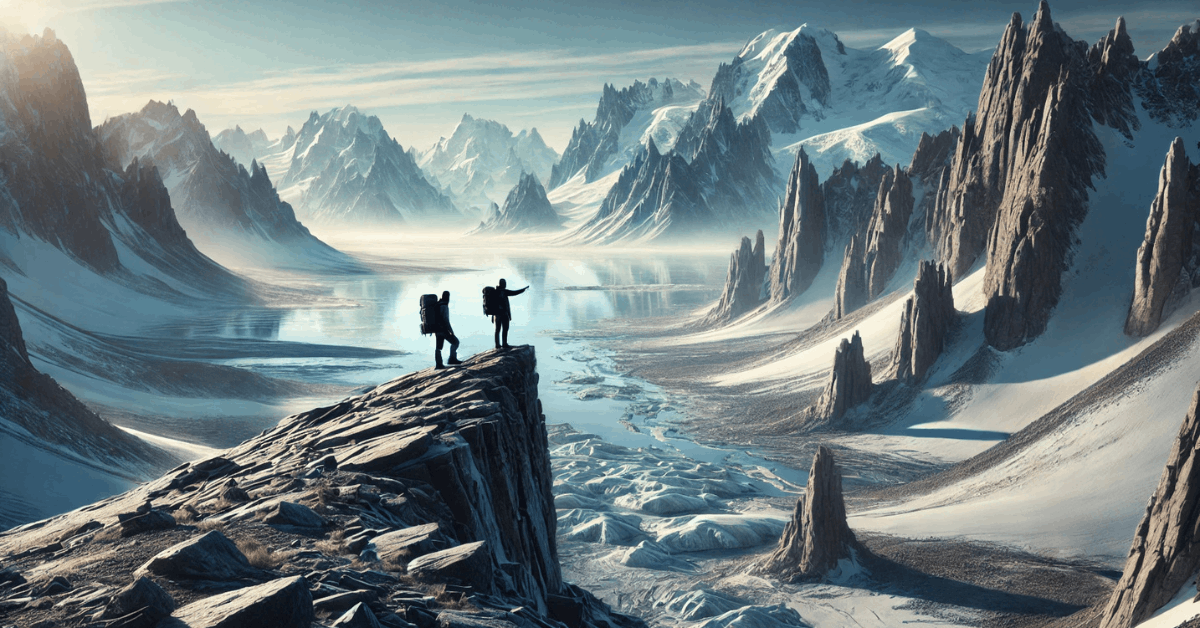Canada stands out as a premier destination, offering a blend of vibrant cities and stunning natural landscapes. You're set to find a variety of attractions catering to all ages, ensuring a memorable experience.
From the sprawling coastline to the numerous climatic zones, Canada’s vastness brings a unique travel experience. This article will guide you through essential tips, helping you make the most of your visit in 2023.
Requirements Before You Can Travel
To ensure a smooth and enjoyable experience when travelling abroad, it's crucial to prepare carefully.
Gather all essential documents, make the necessary arrangements, and familiarize yourself with Canada travel tips before your departure.
This process can be overwhelming, but with the right information, you can navigate it with ease. Now, let's break down the key requirements you need to prepare:
- Valid Passport: Ensure it's up to date and valid for at least six months beyond your planned departure.
- Visa or Electronic Travel Authorization (eTA): Depending on your country of origin.
- Travel Insurance: To cover unexpected medical expenses and trip cancellations.
- Vaccinations: Check if any are required or recommended for Canada.
- Emergency Contacts: Keep a list of local embassies and emergency numbers.
- Copies of Important Documents: Including your passport, travel insurance, and any reservations.
- Currency: Familiarize yourself with the Canadian dollar and consider exchanging some money before you travel.
Can You Obtain Your Requirements Online?
The internet has made travel preparations more accessible and efficient. You can now obtain most of your travel requirements online, saving you time and effort.
This digital shift ensures that you have all the necessary documents and information at your fingertips. Below are platforms that can assist you in your travel preparations:
- Government of Canada’s Official Website: For accurate and up-to-date travel information, visa applications, and eTA.
- Provides official travel advisories, visa information, and eTA applications.
- Travel Insurance Comparison Sites: Visitors Coverage.
- Helps you compare and choose the best travel insurance for your needs.
- Embassy Websites: For specific visa requirements and travel advisories.
- Offers detailed visa information and any country-specific travel advisories.
- Online Checklists and Guides: Like Travel Lemming.
- Provides comprehensive travel checklists and tips for visiting Canada.
- Currency Conversion Websites: To help you understand and convert your money.
- Ensures you are aware of the current exchange rates and helps in budget planning.
What to Pack Based On Canada's Different Climate
Canada's climate varies widely across its vast territory, presenting you with different weather conditions depending on the region and time of year.
To make the most of your trip, incorporating "travel tips in Canada" into your planning can be immensely helpful.
Your packing list should be versatile enough to handle these variations, ensuring you're well-prepared for whatever your Canadian adventure brings.
Arctic
In the Arctic regions of Canada, you'll face extreme cold in winter and cool temperatures in summer. Layering is key to staying warm. A heavy-duty parka, thermal undergarments, and insulated boots are essential.
- Thermal underwear for the base layer
- Insulated, waterproof boots
- Heavy-duty parka or down jacket
- Wool or thermal socks
- Balaclava or thermal face mask
Subarctic
The Subarctic areas have very cold winters and cool summers. You'll need warm clothing and layers to adjust to varying temperatures. Don't forget a good quality winter jacket and insulated gloves.
- Insulated gloves or mittens
- Quality winter jacket
- Layering items like fleece or wool sweaters
- Waterproof and insulated pants
- Warm hat covering ears
Also read: RateHawk: How Agents & Companies Get Discounts in Hotels, Flights & Travel Services
Maritime Climate
With mild winters and cool summers, the Maritime regions require versatile clothing. A waterproof jacket, comfortable walking shoes, and layers will serve you well here.
- Waterproof and windproof jacket
- Comfortable walking shoes or boots
- Layers for varying temperatures
- Umbrella or rain gear
- Lightweight scarf or shawl
Continental Climate
In the interior, prepare for cold winters and warm summers. Pack a mix of warm and light clothing, and don’t forget a good sun hat for summer.
- Sun hat or cap for summer
- A mix of warm and light clothing
- Good quality sunglasses
- Sturdy, comfortable footwear
- Light jacket or sweater for cooler evenings
Mountain Adventure
Mountain climates vary with elevation. Pack layers, waterproof gear, and good hiking boots. A lightweight down jacket can be useful year-round.
- Waterproof hiking boots
- Lightweight down jacket
- Quick-dry clothing for active days
- Sun protection: hat, sunglasses, sunscreen
- Waterproof backpack or bag
Prairie
Expect cold winters, hot summers, and low precipitation in the Prairies, making it essential to consider these tips to travel to Canada.
Pack accordingly with both warm and light clothing, and a good sun hat to ensure you're well-prepared for the varying conditions.
- Sun hat and sunscreen for summer
- Warm clothing for winter
- Comfortable, breathable fabrics
- Sturdy footwear for varying terrain
- Lightweight jacket for cooler evenings
Here are Places You Can Go
Canada offers a plethora of stunning destinations, each unique in its own right, making it a top choice featured in the best Canada travel guide.
Here are five must-visit places, complete with activities and a heads-up on what to watch out for, ensuring you have all the information you need for a memorable journey.
Banff National Park
Banff National Park in Alberta is a haven for outdoor enthusiasts, boasting breathtaking mountain scenery, pristine lakes, and abundant wildlife.
Engage in hiking, skiing, or simply soaking in the natural hot springs. However, be mindful of wildlife; maintain a safe distance, especially from bears and elk.
Transitioning smoothly from the rugged terrains of Alberta, let’s head over to the vibrant city life.
Toronto
Toronto, Ontario’s capital, is a dynamic city filled with skyscrapers, diverse culture, and a vibrant arts scene. Visit the iconic CN Tower, explore the Royal Ontario Museum, or catch a game at the Rogers Centre.
Pay attention to your belongings in crowded places to avoid pickpocketing. Next, we travel eastward, embracing the unique blend of old and new.
Quebec City
Quebec City is renowned for its well-preserved historic architecture, cobblestone streets, and strong French influence.
Explore Old Quebec, a UNESCO World Heritage site, and don’t miss the impressive Château Frontenac. In winter, the city’s streets can be slippery, so wear appropriate footwear.
From the historical streets of Quebec City, we move to the coastal beauty of the Maritimes.
Halifax
Halifax, Nova Scotia, offers a rich maritime history, stunning waterfront, and friendly locals. Visit the Maritime Museum of the Atlantic, stroll along the harbour, and try the fresh seafood.
Be aware of changing weather conditions, as fog and rain can appear unexpectedly.
Finally, we venture into the untamed wilderness of the North.
Yukon
Yukon is perfect for those seeking adventure and solitude. Experience the midnight sun, explore the vast wilderness, and maybe catch the Northern Lights.
Prepare for remote conditions, bring essentials, and be aware that services are sparse.
Conclusion
You've now got a grasp on the vital travel tips and must-know information for your Canadian adventure. Preparation is key, and this guide aims to ensure you're well-equipped for your journey.
Ready to explore Canada? Don’t forget to apply for your eTA online, ensuring a smooth entry. Enjoy your trip and embrace the beauty and diversity that Canada has to offer.

















